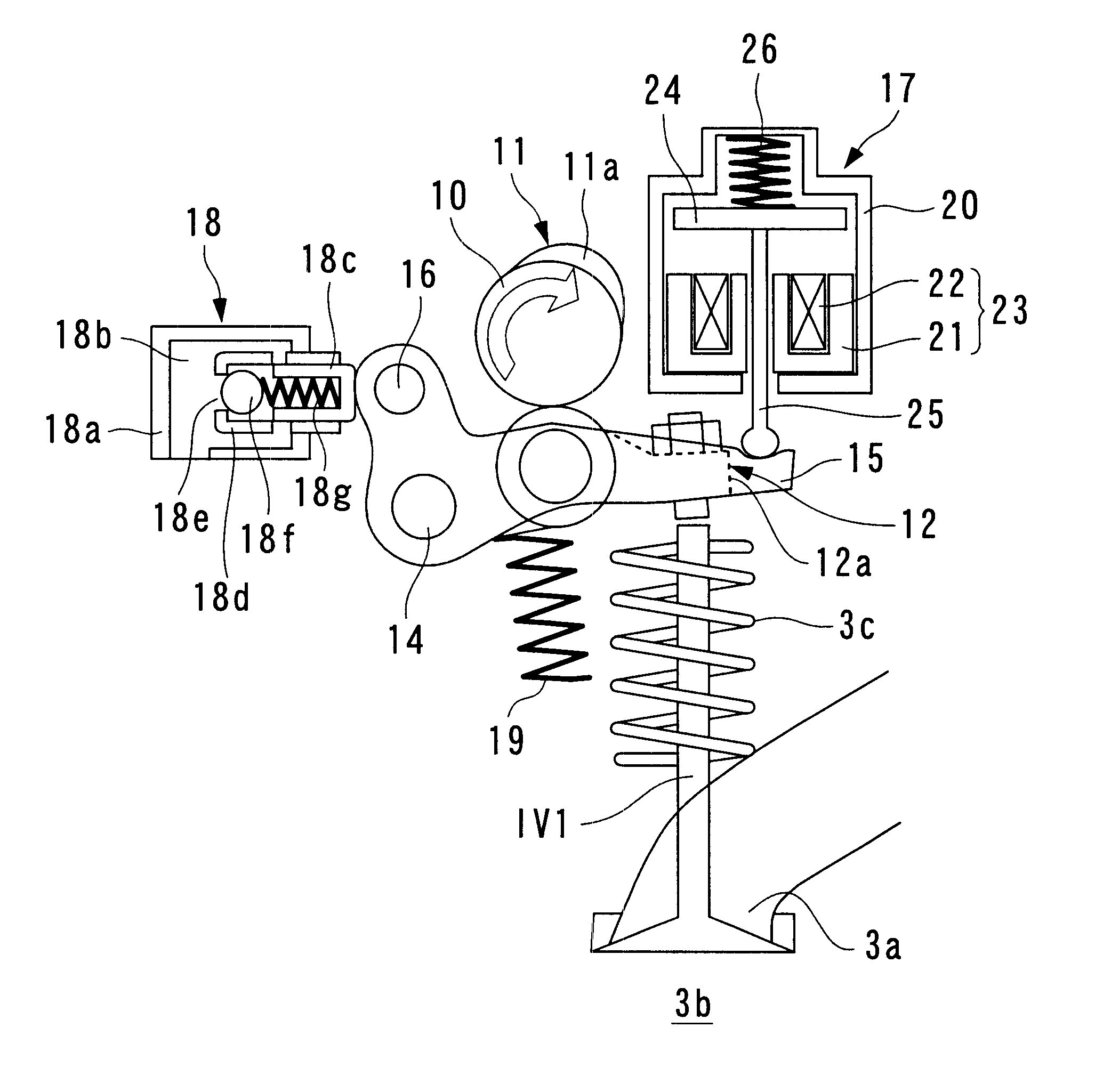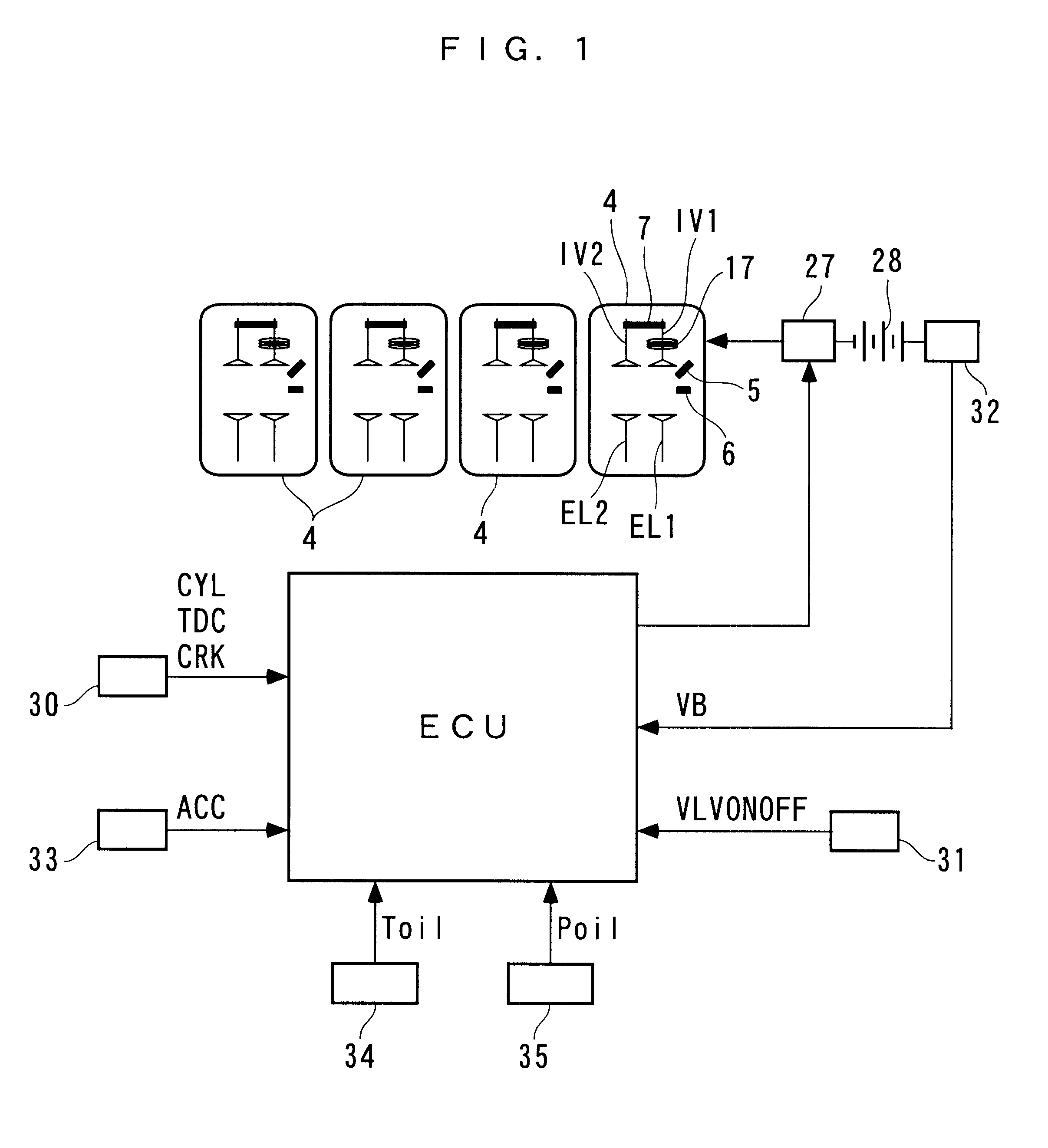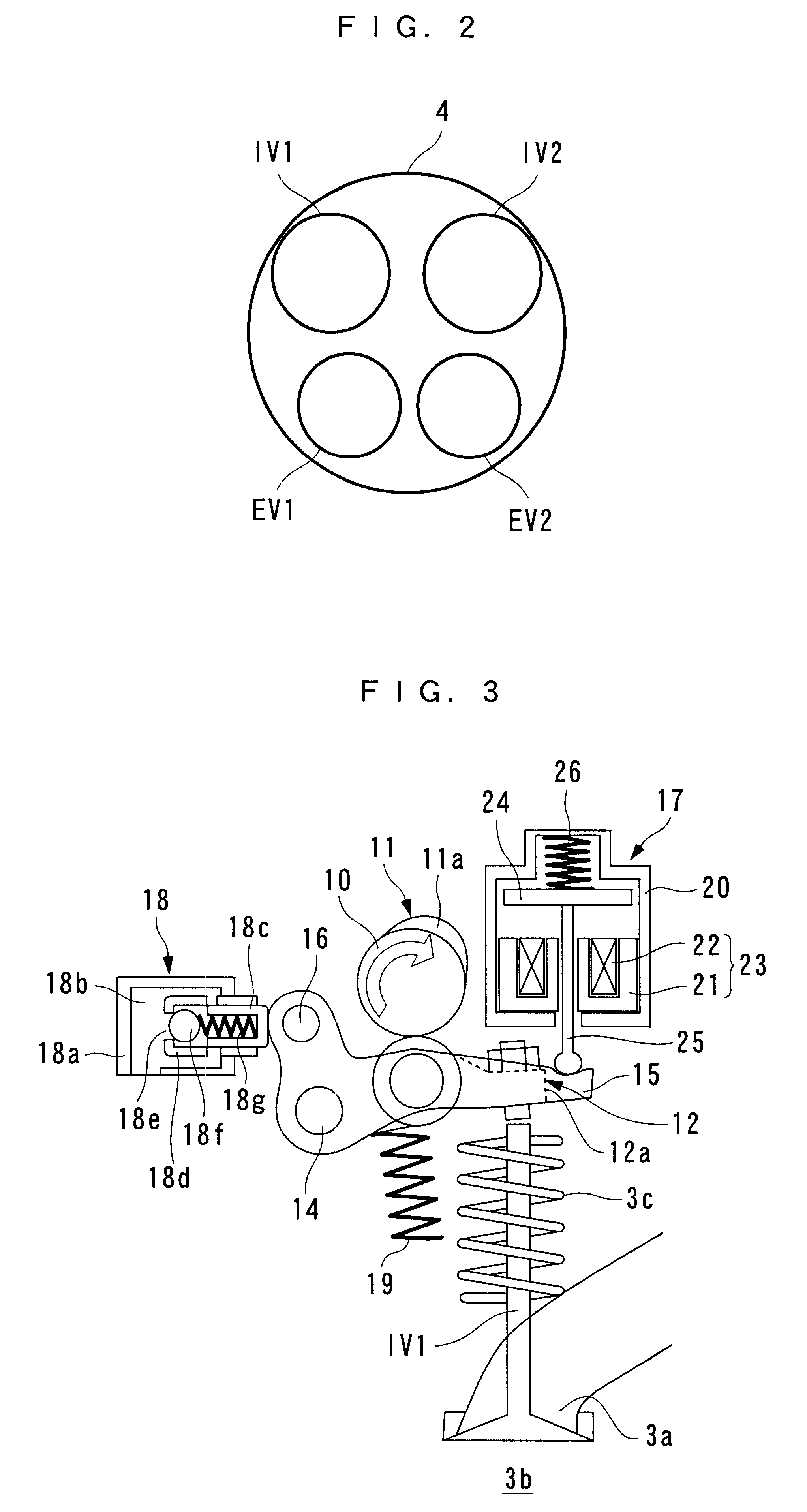Valve timing control system for internal combustion engine
a timing control system and internal combustion engine technology, applied in the direction of machines/engines, non-mechanical valves, output power, etc., can solve the problems of difficult to hold the engine valve in desired timing, response delay, and engine valve cannot be held in desired timing
- Summary
- Abstract
- Description
- Claims
- Application Information
AI Technical Summary
Benefits of technology
Problems solved by technology
Method used
Image
Examples
Embodiment Construction
Hereafter, a valve timing control system for an internal combustion engine, according an embodiment of the invention, will be described with reference to the drawings. FIG. 1 schematically shows the arrangement of an internal combustion engine incorporating a valve timing control system to which the present invention is applied. The illustrated internal combustion engine (hereinafter referred to as "the engine") 3 is a four-cylinder in-line DOHC gasoline engine installed on a vehicle, not shown. Each cylinder 4 is provided with first and second intake valves IV1, IV2, and first and second exhaust valves EV1, EV2 (see FIG. 2), and further with an injector 5 for injecting fuel into an intake port 3a and a spark plug 6 for igniting the air-fuel mixture.
As illustrated in FIG. 3 showing an example of the first intake valve IV1, each of the intake valves IV1, IV2 is arranged such that it is movable between a closed position (shown in FIG. 3) in which the intake port 3a is closed and an op...
PUM
 Login to View More
Login to View More Abstract
Description
Claims
Application Information
 Login to View More
Login to View More - R&D
- Intellectual Property
- Life Sciences
- Materials
- Tech Scout
- Unparalleled Data Quality
- Higher Quality Content
- 60% Fewer Hallucinations
Browse by: Latest US Patents, China's latest patents, Technical Efficacy Thesaurus, Application Domain, Technology Topic, Popular Technical Reports.
© 2025 PatSnap. All rights reserved.Legal|Privacy policy|Modern Slavery Act Transparency Statement|Sitemap|About US| Contact US: help@patsnap.com



